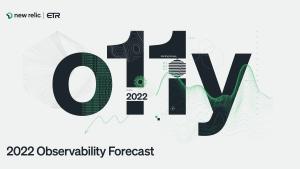After closing the curtain on 2022, we’re continuing to review our 2022 Observability Forecast report to apply what we’ve learned about observability as we move forward into the new year. We’ll be recapping and highlighting key insights in the next few months.
The first installment of our webinar series focused on what full-stack observability means for IT leaders and is available to watch at any time. The webinar series continues in February when we’ll tackle the future of observability. As you’re considering your observability goals for the new year, now’s a great time to watch this video, review highlights as well as the report itself, and sign up for the March 1 webinar.
Why does full-stack observability matter?
In this year-end webinar, we covered key insights from the 2022 Observability Forecast report, based on interviews with more than 1,600 technology professionals from small businesses to global enterprises. I had the pleasure of moderating a lively conversation with Peter Marelas, New Relic Regional CTO, APJ, and the report’s coauthors—Alicia Basteri, Senior Technical Content Marketing Manager at New Relic, and Daren Brabham, Ph.D., Senior Director Analyst at ETR.
As part of our conversation on the overall state of observability, we talked about:
- The trends driving observability. Nearly half of respondents cited the increased focus on security, governance, risk, and compliance as the main driver, and there were other interesting trends driving observability.
- Key observability use cases. The topics of optimizing cloud resources and support of digital transformation efforts are tied for first place.
- Top observability capabilities deployed. The report outlined the top 17 observability capabilities. Network, security, and database monitoring lead the list.
- The number of monitoring tools teams use. The report found that most organizations (94%) use more than two tools.
- The benefits of observability. The top benefits we talked about were uptime, performance, and reliability.
The panel discussed the future of observability, and Peter pointed out that “organizations need to first get the observability basics right, focusing on all of the reactive use cases, making sure their full-stack observability is in place and they can quickly respond to problems and have strategies in place to mitigate incidents.”
A lot of people think of observability as just managing reliability and solving problems. Those are two very important things, and most of our customers will use observability for that. But observability has evolved a long time ago and can support a much broader set of use cases. Security is one, and these trends [found in the report] really demonstrate that.
We finished the discussion by answering several interesting questions from the audience and highlighting that the report is still available in full at newrelic.com/o11y.
The future of observability
In March, we’ll dive into the 2022 Observability Forecast findings on the future of observability. New Relic panelists will talk about new APM features, OpenTelemetry enhancements, and the latest content delivery network (CDN) monitoring and video streaming monitoring that will help make the future of observability a reality in 2023.
Update: Here's a video of the March 1 webinar:
Next steps
Dive into the 2022 Observability Forecast to see more of the insights and best practices uncovered in the research.
Or better yet, sign up for a free New Relic account, ingest your data, and start reaping the benefits of observability today.
The views expressed on this blog are those of the author and do not necessarily reflect the views of New Relic. Any solutions offered by the author are environment-specific and not part of the commercial solutions or support offered by New Relic. Please join us exclusively at the Explorers Hub (discuss.newrelic.com) for questions and support related to this blog post. This blog may contain links to content on third-party sites. By providing such links, New Relic does not adopt, guarantee, approve or endorse the information, views or products available on such sites.


